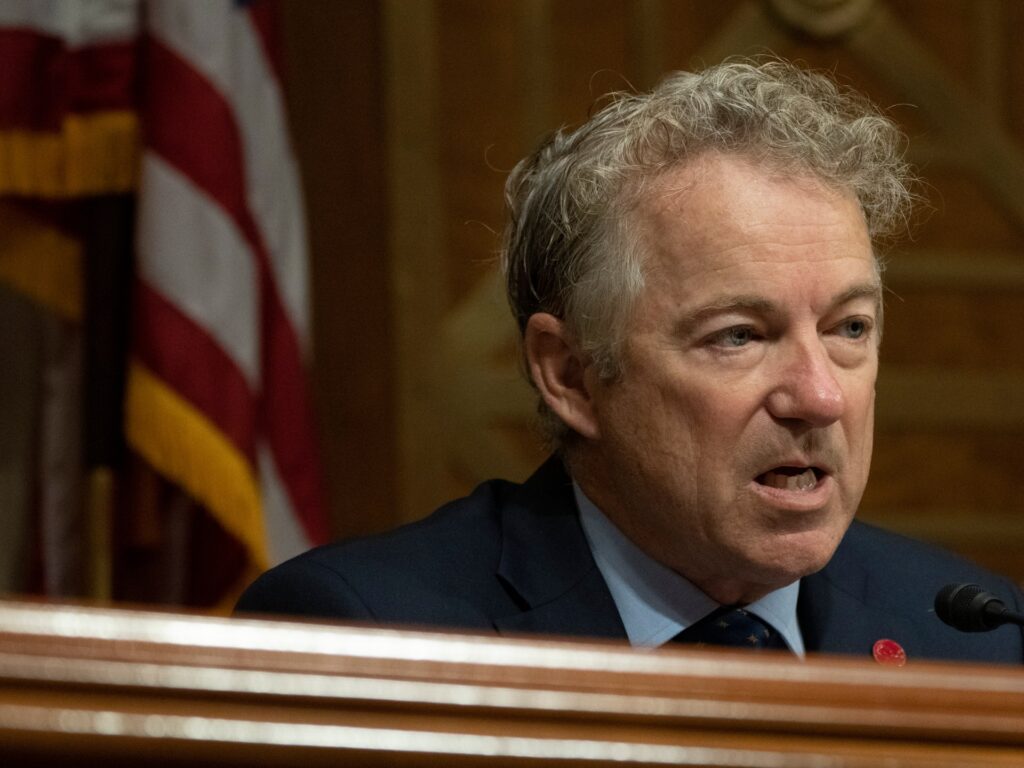President Donald Trump says US military strikes on eight vessels in the Caribbean Sea and the Pacific Ocean, mostly targeting boats from Venezuela, were legal because they carried drugs being delivered to the United States.
But Republican Senator Rand Paul, Kentucky, who is also chair of the Senate Homeland Security Committee, said maritime law enforcement statistics show that not all boats suspected of carrying drugs actually have drugs onboard. He said the military’s strikes were not in line with usual US policy.
“When you stop people at sea in international waters, or in your own waters, you announce that you’re going to board the ship and you’re looking for contraband, smuggling or drugs. This happens every day off of Miami,” Paul said on October 19 on NBC’s “Meet the Press” programme. “We know from Coast Guard statistics that about 25 percent of the time the Coast Guard boards a ship, there are no drugs. So if our policy now is to blow up every ship we suspect or accuse of drug running, that would be a bizarre world in which 25 percent of the people might be innocent.”
Paul made a similar statement in an October 12 interview.
More than 30 people have been killed so far in the strikes, and the Trump administration has provided no evidence that the vessels contained drugs. We rated Trump’s recent statement that each strike saved “25,000 American lives” false.
Paul’s office pointed PolitiFact to the US Coast Guard’s 2024 fiscal year report, which said that year the agency intercepted drugs in about 73 percent of cases when they boarded boats, with about 27 percent of vessel interceptions yielding no drugs.
Experts said the data supports Paul’s point, but noted that it’s unclear how the Coast Guard defines the term it uses to describe intercepting drugs – “a drug disruption”.
“If the (Coast Guard) boards a vessel and finds a known drug trafficker but no drugs, and that individual gets arrested and convicted, does that count as a ‘drug disruption’?” said Jonathan Caulkins, a Carnegie Mellon University drug policy researcher. “Or suppose they approach the vessel, it jettisons the drugs overboard, and so the Coast Guard seizes the vessel but the drugs have disappeared into the water. Is that a successful disruption?”
Paul’s figure might not translate directly to the recent boat strikes, experts said, since the US could have had intelligence about those specific vessels.
PolitiFact contacted the Coast Guard about its data collection process but did not hear back.
Coast Guard report details the agency’s drug interceptions
The Coast Guard reports data about how often it intercepts drugs to the Department of Homeland Security. Its 2024 fiscal year report, which covers October 2023 to September 2024, summarises the agency’s performance in various programmes.
During that period of time, the Coast Guard disrupted drug runs in 91 out of 125 boat interdictions, the report says, which was a rate of about 73 percent.
“The quality of searches performed by Coast Guard boarding teams is high,” the report said, adding that its metrics depend on the quality and timeliness of the intelligence the agency receives.
The rate has varied in recent years. The agency started reporting this drug interception data in fiscal year 2021, according to the report, which shows a drug disruption rate that year of 59 percent – meaning 41 percent of boats searched yielded no drugs.
The interception rate rose to 64 percent in 2022 and 69 percent in 2023. The 2024 drug interception rate of 73 percent represents the Coast Guard’s highest since it started tracking the data. It lists an 80 percent interception rate as its annual goal.
The Coast Guard didn’t answer our questions about its data collection process or what amounts to a drug disruption. A 2025 Coast Guard report evaluating agency data from fiscal years 2021 through 2023 found it didn’t accurately reflect all drug interdictions as some reports didn’t contain drug seizure results or the required documentation.
Experts said we don’t know whether the 2024 Coast Guard statistic directly translates to the recent strikes in the Caribbean Sea and Pacific Ocean.
“The people with fingers on the trigger may demand a much higher certainty rate before shooting,” Caulkins said. “So, even if the senator’s figure were correct when looking across all the many, very diverse operations over the course of a year, that doesn’t mean it applies to the special case of boats of Venezuela. Perhaps it does, but perhaps not.”
The Trump administration’s lack of information about the type or quantity of drugs it says were on the boats makes it impossible to know if every or any of the boats carried lethal drugs, and if they were en route to the US.
Drug experts previously told us that Venezuela plays a minor role in trafficking drugs that reach the US. Most illicit fentanyl in the US comes from Mexico, not Venezuela. It enters the country mainly through the southern border at official ports of entry, and is smuggled in mostly by US citizens.
Our ruling
Paul said, “About 25 percent of the time the Coast Guard boards a ship, there are no drugs.”
A 2024 Coast Guard report said the agency boarded and intercepted boats with drugs on them about 73 percent of the time, which means 27 percent of the interceptions yielded no drugs.
This drug disruption statistic, however, might not translate directly to the recent boat strikes, experts said, since we don’t know what kind of intelligence the US had about those vessels.
Paul’s statement is accurate but needs clarification. We rate it Mostly True.
https://www.aljazeera.com/news/2025/10/27/fact-check-do-quarter-of-uss-drug-boat-searches-find-nothing?traffic_source=rss


